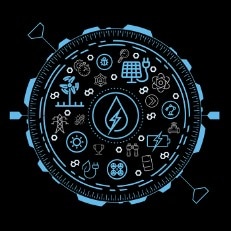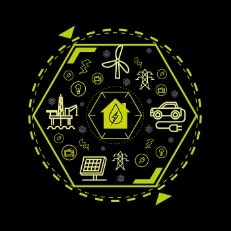Article

Drivers of digital disruption
The utilities sector mega trends
15 June 2017
The Connected Series
The Internet of Things is beginning to transform the Energy and Utilities sector, with customers, employees and assets all becoming increasingly connected.
The Connected Series is a collection of reports focusing on the drivers of digital transformation and explores the different ways companies can respond today and in future.
Connected employee
The utility’s most important asset
Attracting talent with the right skills and expertise is a challenge for utilities. 35% of vacancies are hard to fill and the sector will need to recruit 221,000 people by 2027. But with 154,000 existing jobs in the UK utilities sector likely to be automated, the skills required, the work utilities do, and the way they do it, is going to shift.
Technology has been a key driver, changing the way we work. Millennials want meaningful work, autonomy and agile, flexible ways of working. Utilities are competing in a new talent pool to attract highly skilled people with strong cognitive skills that are in demand across the UK economy. To take advantage of this digital disruption, utilities need flexible organisational structures to fundamentally change the way they attract, develop and engage their workforce.
So what should utilities companies do?
Our report examines how to look beyond traditional workforce engagement and culture by taking a more integrated view, considering the employee experience from end-to-end.
Connected customers
The transformation imperative for Utilities in a digitally disrupted world
The traditional energy company is under threat from its own customers. Connected technology, micro-generation and advances in energy storage are helping empower a customer base, which has traditionally been quick to complain but slow to take control.
Success in the longer term will depend on energy companies adapting to this new world and making themselves relevant to the customer – disrupt or be disrupted!
The Connected Home has started to take off in both consumers’ minds and their living rooms and energy companies should be well placed to take advantage of this interest, given their central role in the home. This interest, however, is yet to translate into serious market penetration.
So what’s holding customers back?
Cost is certainly a factor, but as is often the case, what’s actually more important is the consumer’s perception of value. Providers have yet to make a compelling case for consumers to invest.
Keep CALM and carry on
Connected Asset Lifecycle Management
All utilities companies are under increasing pressure to do more with less, to enhance customer service, to improve the uptime of assets, and to increase predictability of performance.
But most don’t have a detailed, end-to-end view of their asset portfolio.
Not having this view makes it hard to achieve value for money across the asset lifecycle. Indeed, it also prevents companies from establishing a forward-looking view, making it hard for them to predict when assets may fail. This reactive maintenance affects customers more and is costly and disruptive.
A co-ordinated approach is needed to deliver the required change in asset performance and efficiency.
Utilities companies are also being asked to be more customer-focused – with regulators using both carrot and stick to ensure it happens. This means continuity of supply, affordability and customer satisfaction must all be addressed at the same time as, keeping profits up and investors happy.
Coming soon:
Global Tech Trends: Power and Utilities Perspectives
Recommendations
European Power & Utilities Newsletter
Taking a closer look at the European power and utilities market



